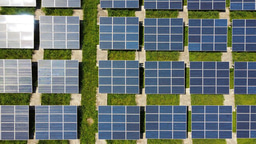Vision with a Mission: Reducing Carbon Footprints Through Teleophthalmology in India
Published in Earth & Environment and Public Health

Bridging the Gap with Teleophthalmology
While the benefits of telemedicine are celebrated globally, the specific impacts of teleophthalmology on primary (rural) and tertiary (urban) networks in India have remained underexplored until now. A pioneering study(https://rdcu.be/dwDlx) has filled this void, illuminating the significant environmental and economic advantages of teleophthalmology in the subcontinent.
At the LV Prasad Eye Institute's primary rural network, teleophthalmology services have enabled an estimated CO2 emissions reduction of 2.89 kg per person and 80 km/person. Extrapolating these savings, the network potentially conserves around 1.26 liters of petrol per person, leading to a total of approximately 67,965 liters saved across the network.
In the tertiary urban network, teleophthalmology initiatives have resulted in an average CO2 emissions reduction of 176.6 kg per person and 1666 km/person This translates into an extrapolated savings of about 75.9 liters of petrol per person, cumulatively saving the network approximately 1.91 million liters of petrol annually.
Economically, the savings were just as impressive; travel expenses were INR 19,970 (USD 250) for the primary (average: INR 370 (USD 4.6) per patient) and INR 758,870 (USD 9486) for the tertiary network (average: INR 8339 (USD 104) per patient).Indirect cost savings (food and wages) were INR 29100 (USD 364) for the primary network and INR 347,800 (USD 4347) for the tertiary network.
The Methodology Behind the Findings
Approved by the institutional review board, the study used a comprehensive approach to assess the environmental and economic impact of teleophthalmological services. It incorporated a robust electronic medical record system and a detailed questionnaire administered to patients across rural and urban settings, analyzing carbon emissions and cost savings associated with various transport modes
The Bigger Picture
This study goes beyond numbers, painting a hopeful picture of a healthcare system that aligns with the principles of sustainability. It showcases how technological innovation can lead to significant environmental and economic benefits, particularly in the realms of rural and urban eyecare systems.
The Road Ahead
As teleophthalmology continues to evolve, it holds the promise of not just better access to eyecare but also a step towards a more sustainable and equitable healthcare system for India and, potentially, the world.
Conclusion
In conclusion, the integration of telemedicine in ophthalmology stands as a beacon of progress, offering a dual boon of carbon efficiency and cost-effectiveness. It's a model that could very well redefine the future of healthcare delivery, not just in India but across the globe.
Follow the Topic
-
Eye

The official journal of The Royal College of Ophthalmologists. Eye seeks to advance the science and practice of ophthalmology with the latest clinical and scientific research for clinicians, optometrists, orthoptists, other health care professionals and researchers interested in the visual sciences.
Related Collections
With Collections, you can get published faster and increase your visibility.
Sustainability in Ophthalmology
Publishing Model: Hybrid
Deadline: Ongoing



Please sign in or register for FREE
If you are a registered user on Research Communities by Springer Nature, please sign in